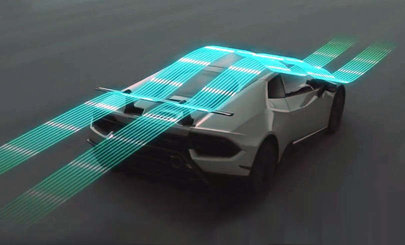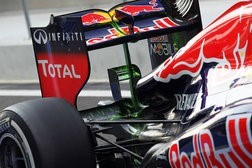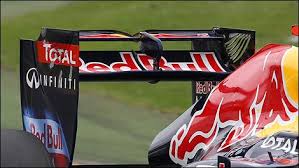You are viewing an older revision! See the latest version
Active Aerodynamics and DRS
Project Overview¶
The aim of our project is to create a scaled down, but fully functional, active aerodynamics package and Drag Reduction System (or DRS) for a Formula 1 style racecar, providing adjustable downforce control depending on where the car is on track.
This is achieved through raising or lowering four flaps, one at each corner of the vehicle, each controlled independently by a servo motor.
Project Background¶
Active Aerodynamics¶
The aerodynamics of a car controls the airflow over the vehicle, with design tradeoffs being made between producing downforce to counteract undesirable lift forces and maintaining maximum possible speed.
Active aerodynamics allows the airflow over the car to be modified in real-time, maintaining maximum efficiency no matter what conditions the car is under. This commonly takes the form of front and rear wings (also known as spoilers) whose angle is altered depending on whether the driver wants maximum speed on a straight (requiring mimimal downforce) or is cornering at a high speed (requiring high levels of downforce).
More on active aerodynamics can be found at this website:
http://www.bbc.com/autos/story/20140819-carmakers-slippery-new-buzzword

Drag Reduction System (DRS)¶
The Drag Reduction System is a type of active aerodynamics specific to Formula 1 racing. Specifically, this is the movement of the rear wing to create a short burst of reduced drag, allowing the driver to overtake other vehicles.
There are very strict rules covering the use of DRS, which is only allowed to be used on designated sections of the track, and if the driver is within one second of the car in front.
More on active aerodynamics can be found at this website:
https://www.racecar-engineering.com/articles/f1/drs-the-drag-reduction-system/
| BEFORE | AFTER |
|---|---|
 |  |